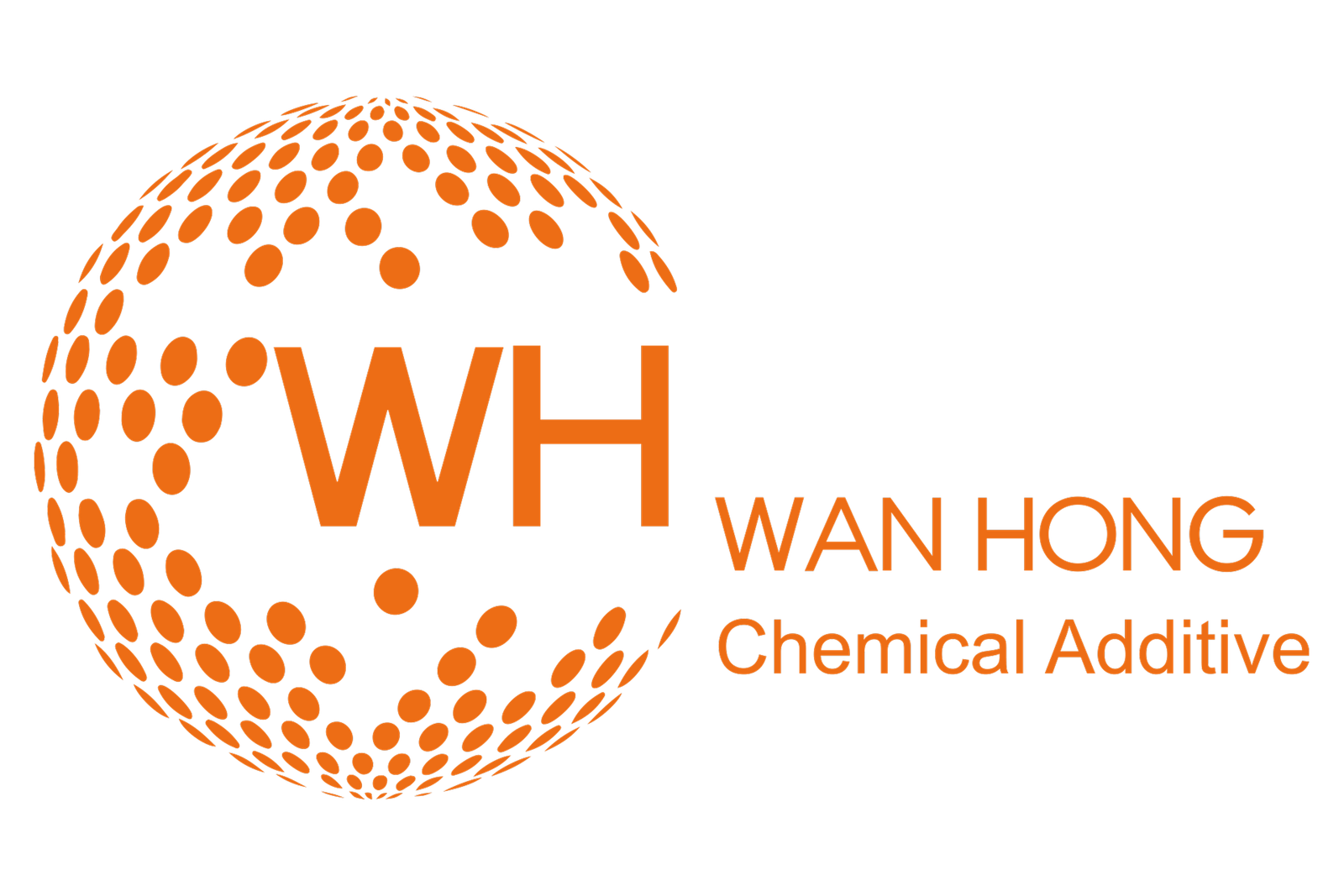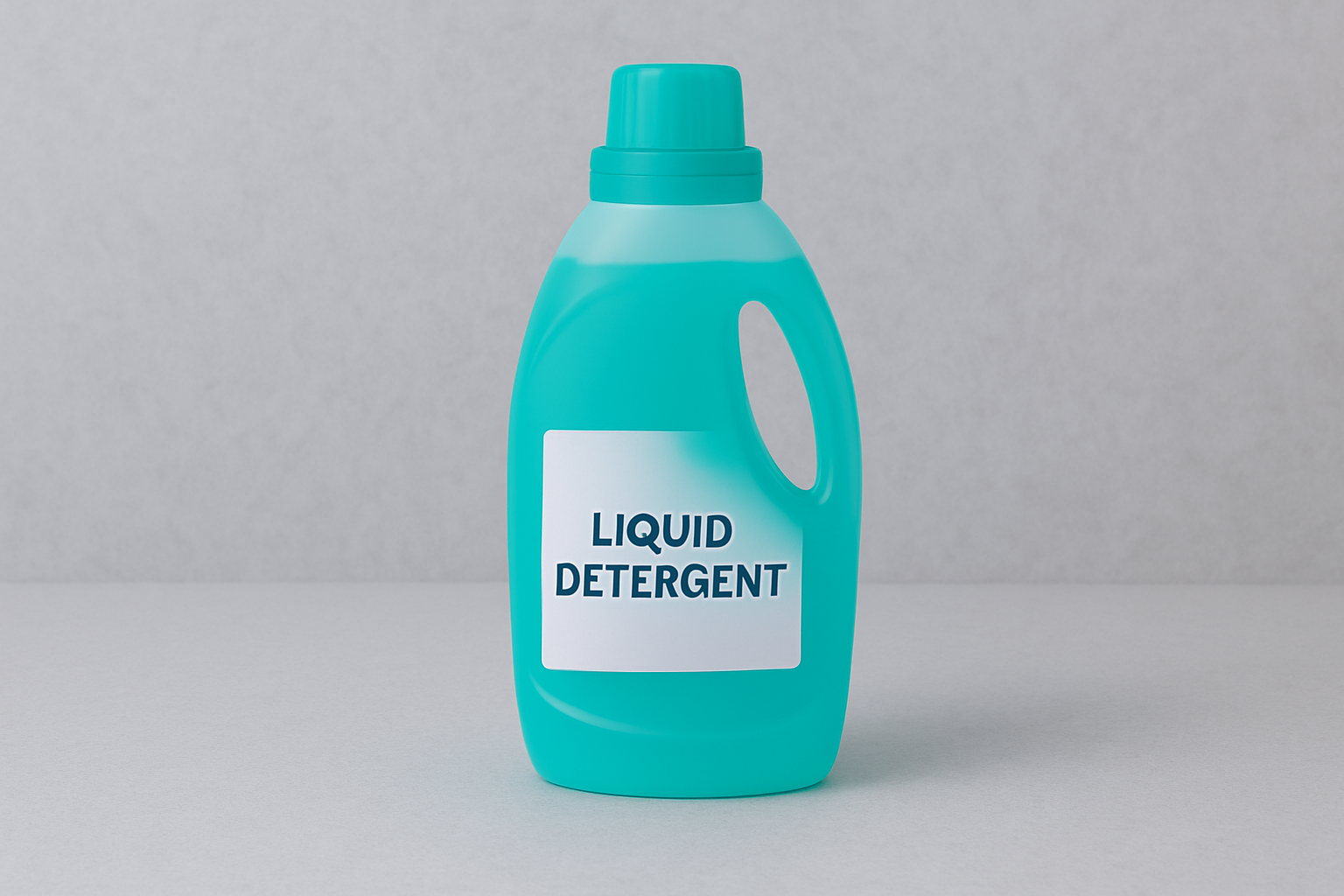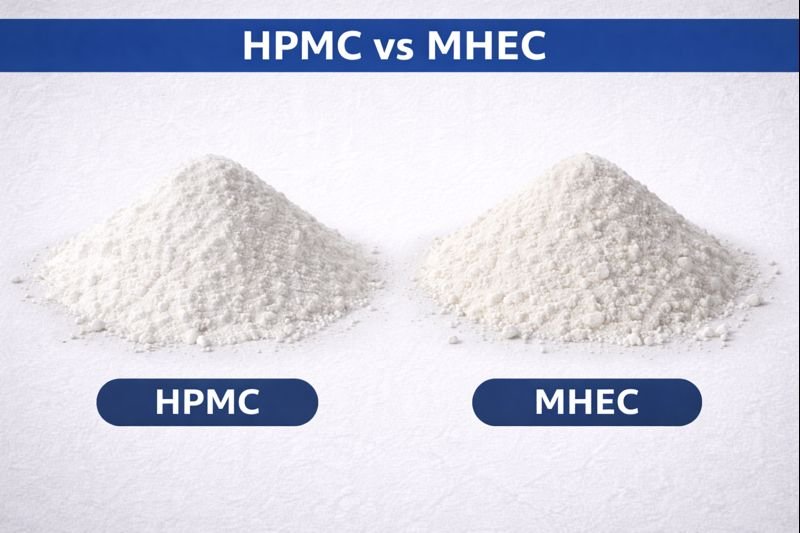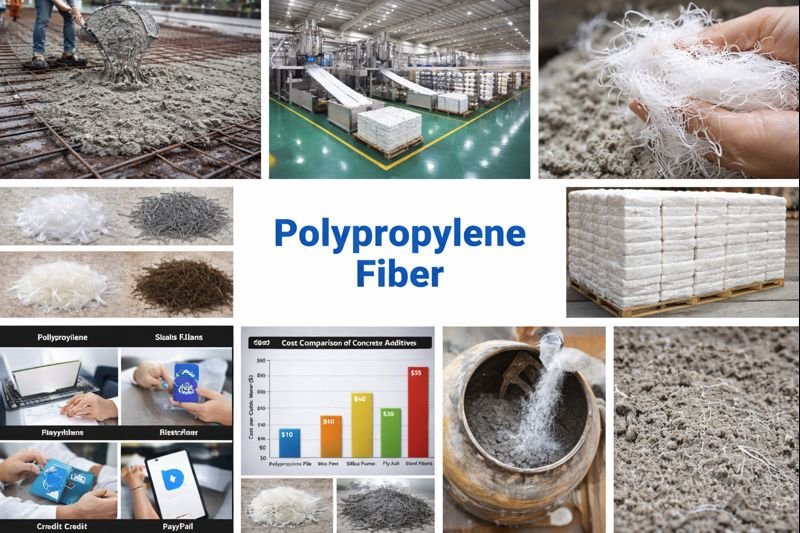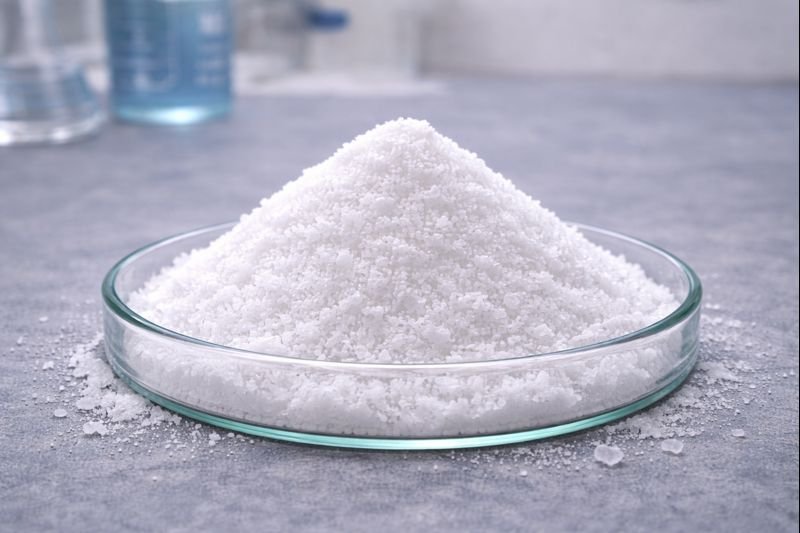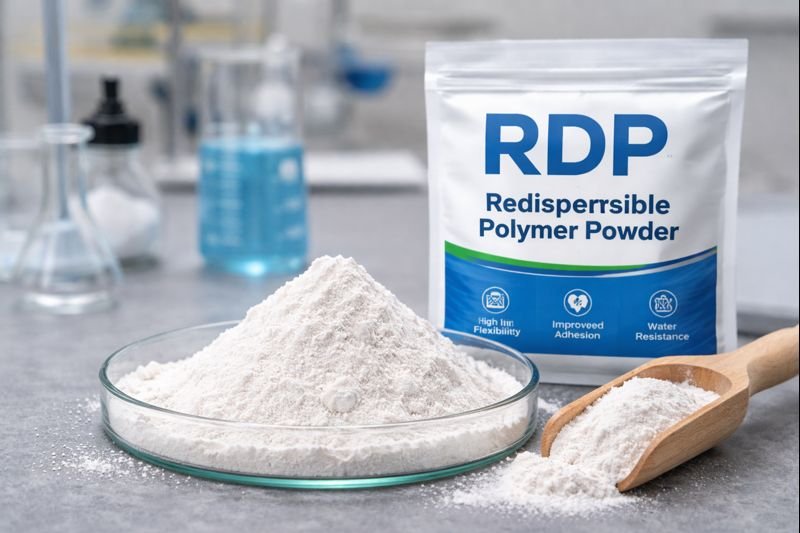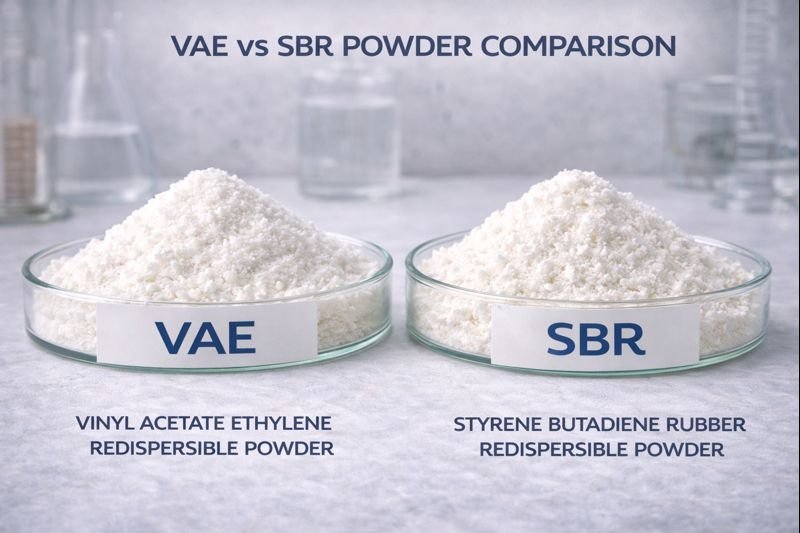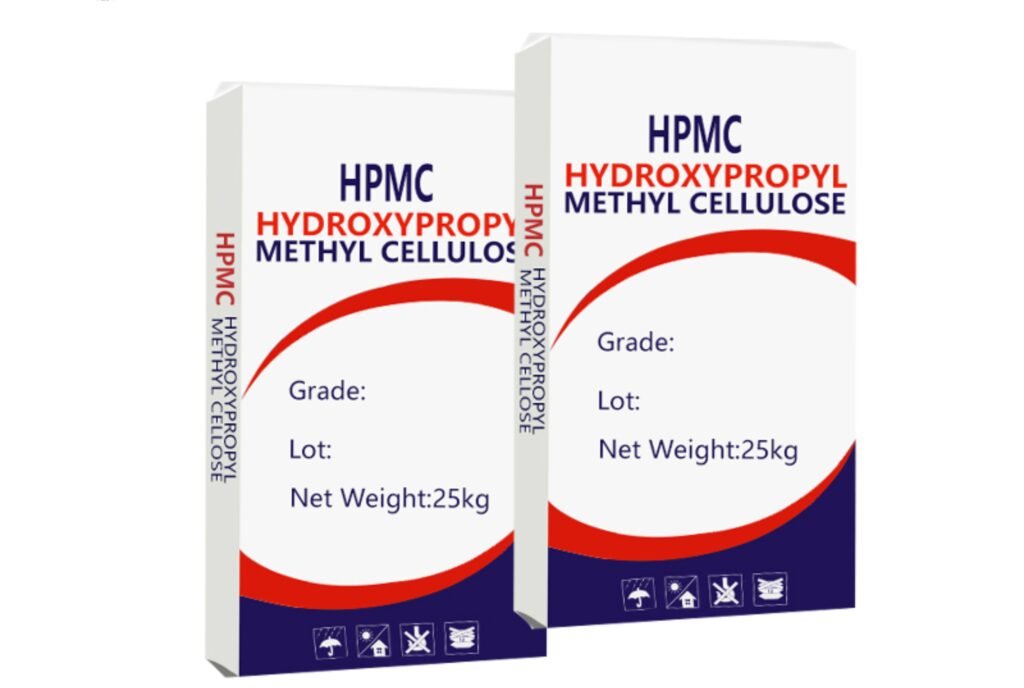Are you struggling with detergent formulations that separate, lose viscosity, or perform inconsistently? Many manufacturers face these challenges, costing time, money, and reputation in an increasingly competitive market.
HPMC (Hydroxypropyl Methylcellulose)1 is essential for modern detergent formulations because it acts as a thickener, stabilizer, film-former, and rheology modifier. It prevents ingredient separation, maintains viscosity, improves spreadability, and enhances the overall cleaning performance of liquid and powder detergents.
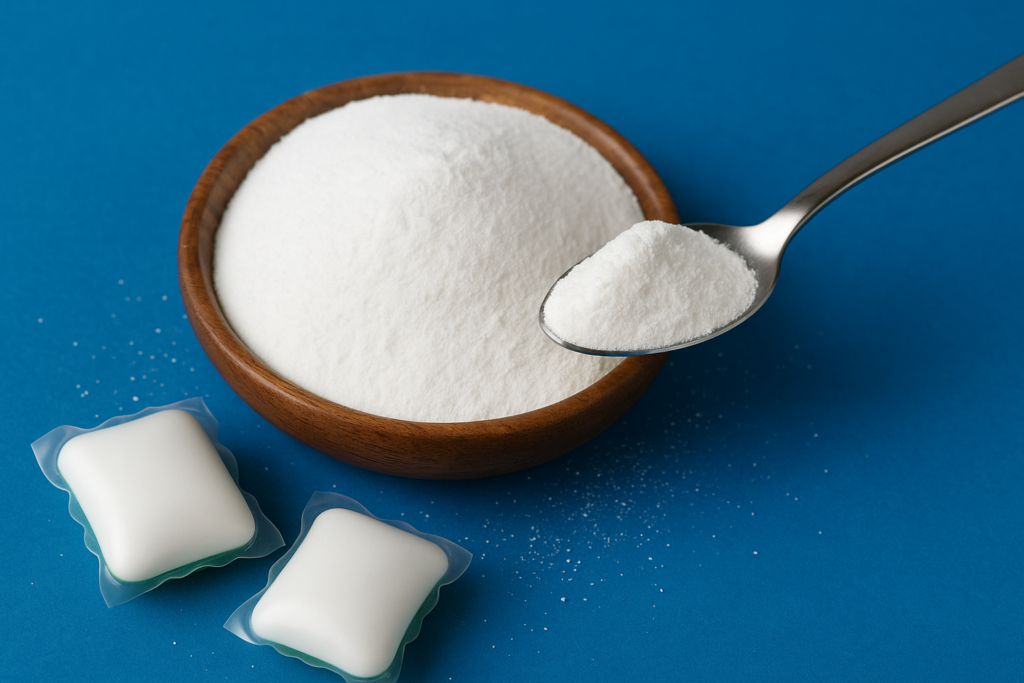
When I started formulating detergents years ago, finding the right balance of performance and stability was always challenging. That's when I discovered HPMC's remarkable properties. Let me share what makes this cellulose derivative so valuable for your detergent formulations2 and why Kehao's HPMC products stand out in the market.
How to Choose The Best Value HPMC for Detergents?
Are you overwhelmed by the variety of HPMC options available for your detergent formulations? Many manufacturers select the wrong grade, resulting in production issues, inconsistent product quality, and customer complaints.
To choose the best HPMC for detergents, focus on viscosity (typically 100,000-150,000 mPa·s for liquid detergents), methoxyl content (19-24% for better water solubility), hydroxypropyl content (7-12% for stability), and particle size3 (fine powder for easier dispersion). Always request samples for compatibility testing.
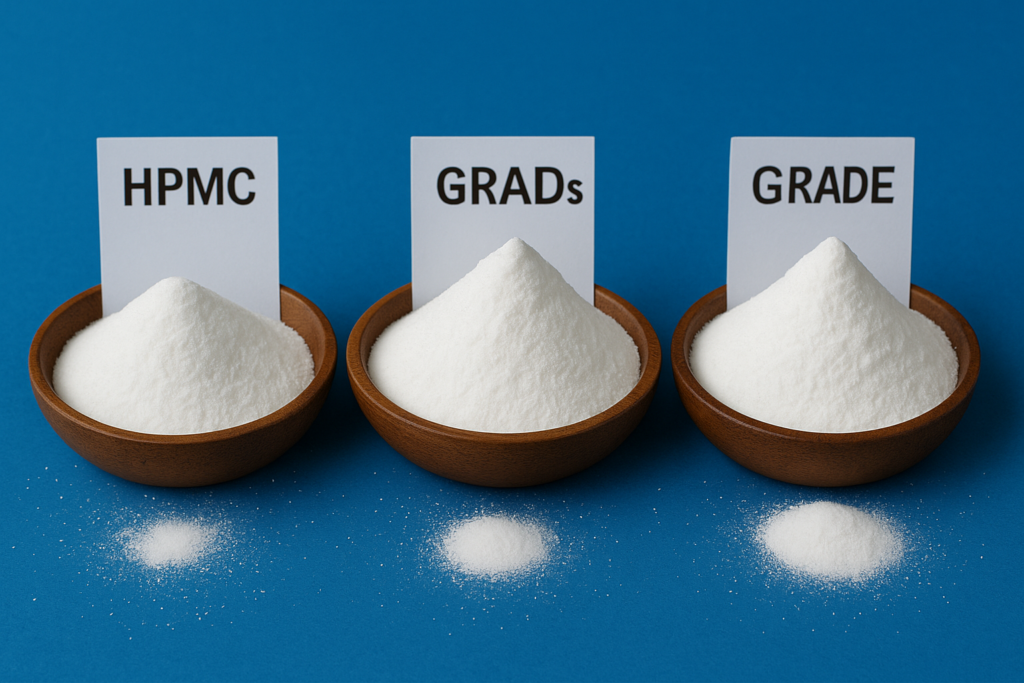
When selecting HPMC for detergent applications, several factors deserve careful consideration beyond just the basic specifications. The dissolution temperature plays a crucial role in production efficiency, with cold-water soluble grades offering advantages for manufacturers working with temperature-sensitive ingredients. Gel point is another critical parameter, especially for liquid detergents where stability across varying temperatures is essential.
I've worked with numerous detergent manufacturers who initially focused solely on price, only to discover that the wrong HPMC grade created costly reformulation needs. For liquid detergents, HPMC with higher viscosity (100,000-150,000 mPa·s) typically delivers better stability, while powder detergents may benefit from lower viscosity grades (15,000-30,000 mPa·s) for proper dissolution.
The chemical modification level significantly impacts performance too. HPMC with methoxyl content between 19-24% and hydroxypropyl content between 7-12% generally provides the optimal balance for detergent applications, offering good water solubility while maintaining stability in alkaline environments common in cleaning products.
| HPMC Property | Recommended Range for Detergents | Impact on Formulation |
|---|---|---|
| Viscosity | 15,000-30,000 mPa·s (powder detergents) 100,000-150,000 mPa·s (liquid detergents) | Controls flow properties and stability |
| Methoxyl Content | 19-24% | Affects water solubility and film formation |
| Hydroxypropyl Content | 7-12% | Influences stability in various pH conditions |
| Particle Size | Fine powder (<150 μm) | Determines dissolution rate and dispersion |
What Are WANHONG Detergent Grade HPMC Specifications?
Are you tired of inconsistent HPMC quality affecting your detergent production? Many manufacturers suffer from batch-to-batch variations that lead to unpredictable product performance and customer complaints.
WANHONG detergent-grade HPMC4 offers viscosity ranges from 15,000-150,000 mPa·s, methoxyl content of 19-24%, hydroxypropyl content of 7-12%, and moisture content below 5%. Our specialized grades feature enhanced alkaline resistance and excellent compatibility with surfactants common in detergent formulations.
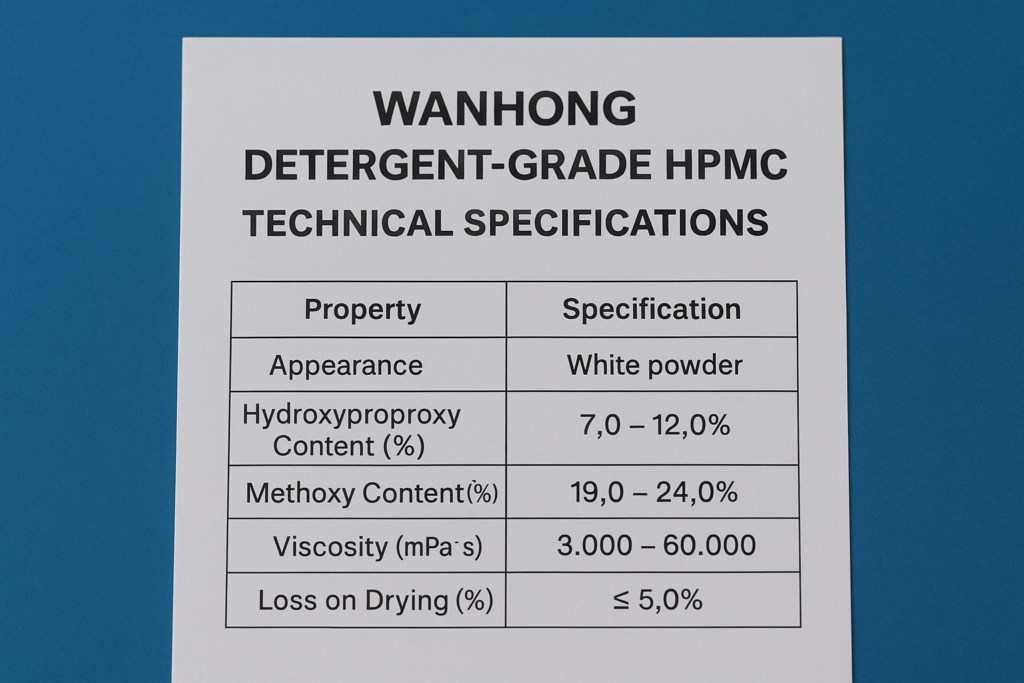
At Wanhong, we've developed our WANHONG HPMC product line specifically to address the unique challenges faced by detergent manufacturers. Our specialized production process ensures consistent quality parameters critical for detergent applications. Through years of collaboration with major cleaning product manufacturers across Saudi Arabia, UAE, India, and other regions, we've refined our specifications to meet the most demanding requirements.
Our detergent-grade HPMC undergoes rigorous testing beyond standard parameters. We evaluate surfactant compatibility, alkaline stability, and performance under various temperature conditions to ensure optimal behavior in finished products. This comprehensive quality control process is why many of our clients have remained loyal for over a decade.
The WANHONG HPMC product line includes several specialized grades tailored to different detergent applications:
| Grade | Viscosity (mPa·s) | Recommended Application | Key Features |
|---|---|---|---|
| WH-P200S | 80,000-120,000 | Premium liquid detergents | Superior suspension properties, excellent clarity |
| WH-P160S | 60,000-90,000 | Standard liquid detergents | Good balance of thickening and flow properties |
| WH-P150S | 40,000-60,000 | Economy liquid detergents | Cost-effective viscosity modification |
| WH-R6416S | 25,000-35,000 | Powder detergents | Enhanced dissolution rate, anti-caking properties |
All our detergent grades feature controlled dissolution profiles to prevent lumping during production, precise particle size distribution for reliable dispersion, and specialized surface treatments to prevent dusting during handling. Our manufacturing facility's six production lines ensure consistent supply even during peak demand seasons, eliminating the supply chain uncertainties that plague many other suppliers.
What Are the 4 Amazing Benefits of HPMC for Detergent?
Do you struggle with detergent formulations that separate quickly or feel inconsistent to your customers? Many manufacturers lose market share because their products lack the stability and feel that consumers expect from premium cleaning products.
HPMC provides four key benefits to detergents: it serves as an effective thickener that creates stable viscosity, prevents ingredient separation through its suspension properties, improves flow characteristics for better dispensing, and forms protective films on surfaces that reduce resoiling after cleaning.
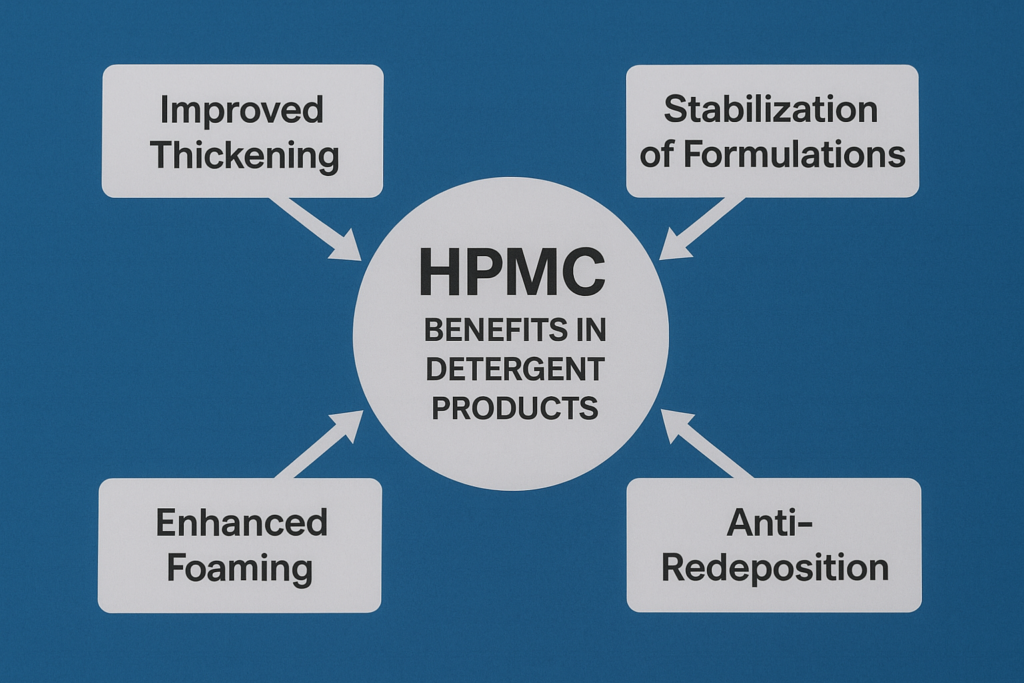
The benefits of incorporating HPMC into detergent formulations extend far beyond basic thickening. First, HPMC creates pseudoplastic rheology in liquid detergents - a technical term that describes how products flow easily when poured but remain thick and stable on surfaces. This property is particularly valuable for vertical surface cleaning applications like bathroom cleaners and glass cleaners where cling time directly impacts cleaning performance.
I've worked with several detergent manufacturers who struggled with ingredient separation during storage and shipping. After incorporating our WANHONG HPMC at appropriate concentrations (typically 0.3-0.8%), they reported dramatic improvements in product stability, even in challenging conditions like high-temperature warehouse storage in Middle Eastern countries where temperatures regularly exceed 40°C.
The film-forming capability of HPMC also provides a remarkable secondary benefit that enhances consumer perception. When detergents containing HPMC dry on surfaces, they leave an almost imperceptible protective film that helps prevent dirt from adhering as readily to the cleaned surface. In practical terms, this means surfaces stay cleaner longer - a benefit that builds brand loyalty when consumers notice their cleaning efforts last longer.
| HPMC Benefit | Technical Mechanism | Consumer Perception |
|---|---|---|
| Thickening | Hydrogen bonding creates 3D polymer network | "Rich, premium" product feel |
| Suspension | Steric hindrance prevents particle settling | Consistent product performance over time |
| Flow Modification | Pseudoplastic behavior | Easy pouring but good cling on surfaces |
| Film Formation | Polymer deposition during drying | Surfaces stay cleaner longer |
Additionally, HPMC improves the environmental profile of detergent formulations. As a plant-derived, biodegradable polymer5, it aligns with the growing consumer demand for more sustainable cleaning products. This aspect has become increasingly important as regulatory requirements for biodegradability become stricter in many markets.
What Are the Versatile Applications of HPMC in Detergent Formulations?
Have you noticed how some detergent brands maintain perfect consistency while others separate or become watery over time? The difference often lies in their use of specialty ingredients like HPMC, which creates stability issues when improperly applied.
HPMC is versatile in detergent formulations, working effectively in liquid hand soaps, laundry detergents, dish soaps, surface cleaners, and automatic dishwasher detergents. It provides optimal viscosity control, suspension of visual elements, prevention of phase separation, and enhanced product stability across various pH levels and temperatures.
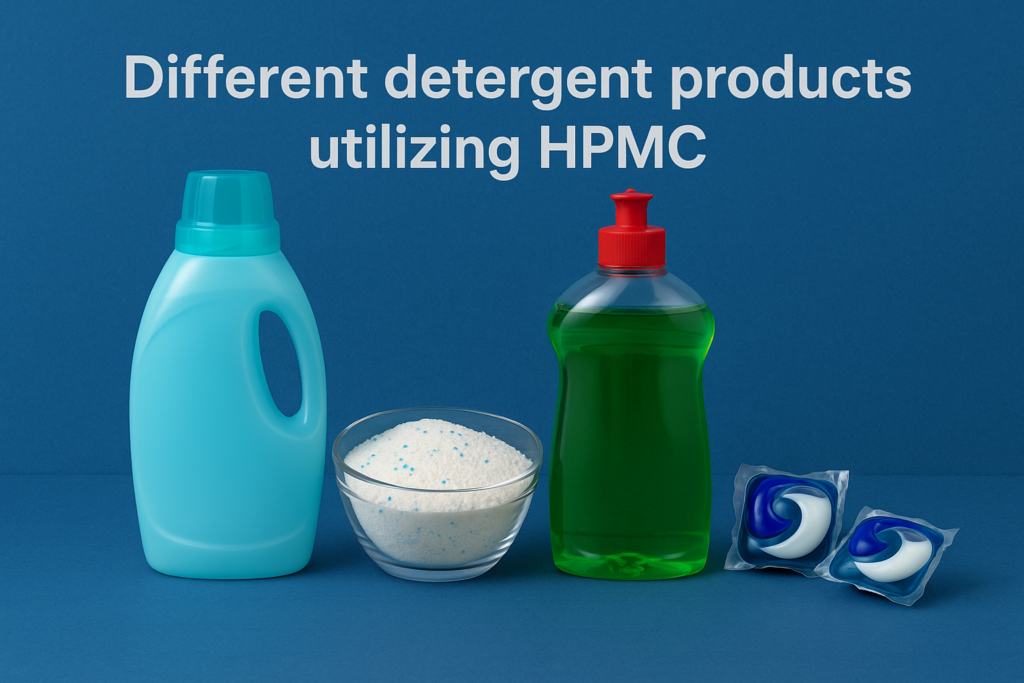
The application versatility of HPMC in detergent formulations stems from its unique chemical structure that combines hydrophilic and hydrophobic regions, allowing it to function effectively in diverse cleaning product environments. In premium liquid hand soaps, HPMC at 0.5-0.8% concentration creates the luxurious feel consumers associate with quality products. The thickening occurs through a three-dimensional polymer network that forms as HPMC hydrates, creating stable viscosity that doesn't thin excessively when shear force is applied.
For laundry detergents, particularly concentrated formulations, HPMC serves multiple functions simultaneously. It helps suspend optical brighteners and fragrance microcapsules, preventing their settlement even during extended storage. This suspension capability is critical for maintaining product efficacy and consumer satisfaction. I've personally assisted detergent manufacturers who were struggling with brightener settlement that caused inconsistent cleaning results - implementing the appropriate grade of WANHONG HPMC resolved these issues completely.
Automatic dishwasher detergents represent one of the most challenging applications due to their highly alkaline nature. Here, specialized grades of HPMC with enhanced chemical resistance prove invaluable. Our WH-P series with modified hydroxypropyl content provides stability in these harsh environments while controlling tablet disintegration rates to optimize cleaning performance.
| Detergent Application | Recommended HPMC Grade | Typical Usage Level | Key Function |
|---|---|---|---|
| Liquid Hand Soap | WH-P200S | 0.5-0.8% | Luxurious viscosity, pearlescent suspension |
| Laundry Detergent | WH-P160S | 0.3-0.6% | Ingredient suspension, pouring control |
| Dish Soap | WH-P160S | 0.4-0.7% | Stable foam structure, cling on vertical surfaces |
| Surface Cleaner | WH-P200S | 0.3-0.5% | Extended contact time on surfaces |
| Dishwasher Detergent | WH-P6416S | 1-2% | Controlled dissolution, tablet binding |
Surface cleaners benefit from HPMC's ability to create temporary adherence to vertical surfaces, extending the contact time between active cleaning agents and soils. This property is particularly valuable for bathroom cleaners targeting soap scum and limescale, where chemical reaction time directly correlates with cleaning effectiveness.
What Are the 6 Roles of HPMC in Liquid Detergent?
Are you frustrated with liquid detergents that thin out over time or feel inconsistent batch-to-batch? Many formulators struggle to achieve stable, premium-feeling products because they misunderstand the multiple functions HPMC can perform.
HPMC6 serves six critical roles in liquid detergents: primary thickening agent, suspension stabilizer for insoluble ingredients, rheology modifier for improved flow properties, foam stabilizer that extends bubble persistence, protective colloid preventing incompatibilities between ingredients, and surface film former that reduces resoiling after cleaning.
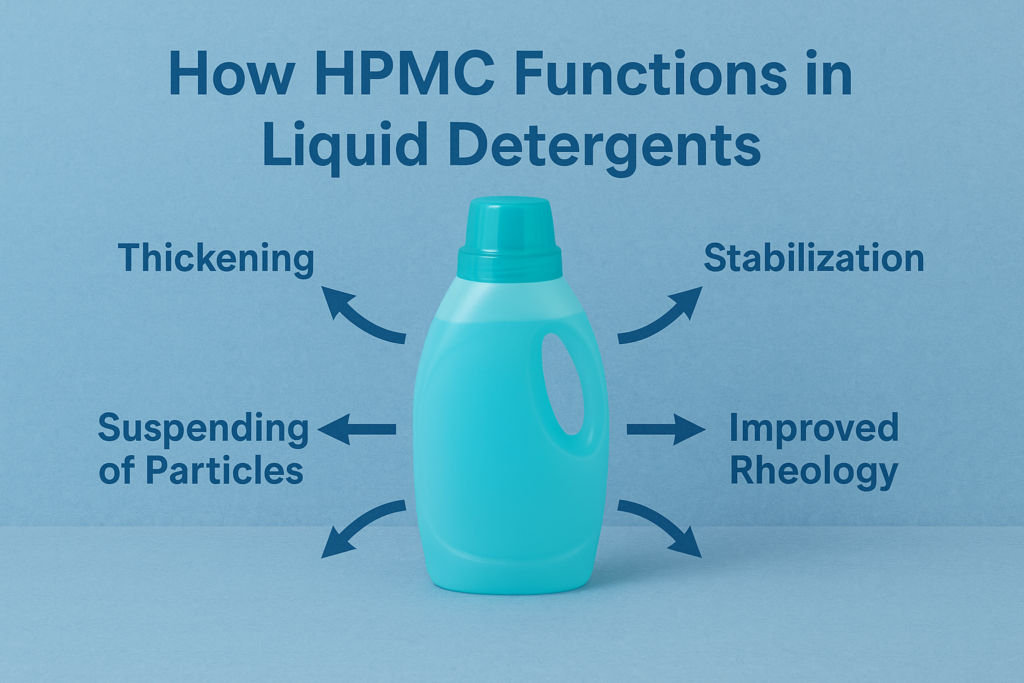
The multifunctional nature of HPMC makes it uniquely valuable in liquid detergent formulations. As a primary thickening agent, it works through a mechanism called "associative thickening," where the polymer chains create a three-dimensional network in water that restricts flow. This mechanism differs from inorganic thickeners, providing more stable viscosity across temperature ranges and better compatibility with other ingredients. I've observed this firsthand when formulating for markets with extreme climate conditions like the Middle East, where temperature stability is critical.
HPMC6's suspension capabilities derive from its ability to increase the yield value of the system, effectively "holding" particles in place against gravitational forces. This prevents the sedimentation of optical brighteners, pearlescent agents, and fragrance microcapsules that would otherwise settle during storage. The benefit extends to preventing "floating" of low-density ingredients like certain botanical extracts that might otherwise rise to the top of formulations.
The rheology modification role is particularly interesting, as HPMC creates pseudoplastic behavior (shear-thinning) that allows products to pour easily from bottles but remain thick on surfaces. This property directly impacts consumer perception of product quality and effectiveness. We've conducted consumer studies showing that identical cleaning formulations are rated more effective when HPMC is used to optimize rheology, simply because the product stays on surfaces longer.
| Role of HPMC | Technical Mechanism | Formulation Benefit | Consumer Benefit |
|---|---|---|---|
| Thickening Agent | Hydrogen bonding network formation | Viscosity stability during storage | Premium product perception |
| Suspension Stabilizer | Increased yield value | Uniform distribution of visual elements | Consistent performance over shelf life |
| Rheology Modifier | Pseudoplastic flow behavior | Easy processing and filling | Better control during application |
| Foam Stabilizer | Increased solution viscosity | More persistent foam | Enhanced cleaning perception |
| Protective Colloid | Steric hindrance between particles | Compatibility with diverse ingredients | No separation or curdling |
| Film Former | Polymer deposition on surfaces | Soil resistance after cleaning | Surfaces stay cleaner longer |
The foam stabilization function is particularly valuable in hand dishwashing liquids, where foam persistence is directly linked to consumer perception of cleaning power. By increasing the viscosity of the liquid films between bubbles, HPMC slows the drainage process that causes foam collapse, extending the visual feedback consumers use to judge product performance.
As a protective colloid, HPMC prevents incompatibilities between different surfactant types and hard water minerals that might otherwise cause clouding or separation. This role is especially important for formulations marketed in regions with varying water hardness, ensuring consistent performance regardless of local water conditions.
Why Choose WANHONG as Your Reliable Cellulose Ether Supplier for Detergent?
Are you tired of suppliers who provide inconsistent product quality or fail to deliver on time? Many manufacturers face production delays and quality control issues because their HPMC supplier doesn't understand their specific detergent application needs.
WANHONG is a reliable cellulose ether supplier for detergent manufacturers because we offer specialized grades for different applications, consistent quality with comprehensive testing, technical support from detergent formulation experts, flexible order quantities, and stable supply with six dedicated production lines ensuring timely delivery even during peak seasons.
Choosing the right supplier for critical ingredients like HPMC goes beyond just product specifications - it's about partnership reliability. At Kehao, we've built our reputation on understanding the unique challenges faced by detergent manufacturers. Our technical team includes specialists with backgrounds in surfactant chemistry and cleaning product formulation who speak your language and understand your challenges.
Our manufacturing facility in China features six production lines dedicated to different HPMC grades, ensuring that we can maintain consistent supply even when demand spikes. This production capacity has proven invaluable to our clients during recent supply chain disruptions, when many competitors couldn't fulfill orders. We maintain strategic inventory levels of our most popular detergent grades, allowing us to respond quickly to urgent needs.
Quality control is where WANHONG7 truly differentiates itself. Each batch undergoes comprehensive testing beyond standard parameters, including application-specific tests that simulate detergent environments. We evaluate surfactant compatibility, stability in various pH conditions, and performance across temperature ranges relevant to both production and end-use scenarios. This testing regime is why major manufacturers across Saudi Arabia, UAE, Iran, India, and other markets trust our products for their premium formulations.
| WANHONG Advantage | Benefit to Detergent Manufacturers | ||
|---|---|---|---|
| Specialized Grades | Optimized performance for specific applications | ||
| Consistent Quality | Reliable batch-to-batch performance | ||
| Technical Support | Expert guidance | WANHONG Advantage | Benefit to Detergent Manufacturers |
| ------------------- | ----------------------------------- | ||
| Specialized Grades | Optimized performance for specific applications | ||
| Consistent Quality | Reliable batch-to-batch performance | ||
| Technical Support | Expert guidance on formulation challenges | ||
| Flexible Order Quantities | Accommodates both small and large manufacturers | ||
| Stable Supply Chain | No production interruptions due to material shortages | ||
| Comprehensive Documentation | Simplifies regulatory compliance |
Our commitment to partnership extends to technical support and formulation assistance. When a major client in Saudi Arabia struggled with stability issues in a new eco-friendly detergent line, our technical team didn't just recommend a product - we worked alongside their formulators to optimize the entire system, testing multiple HPMC grades and concentrations to find the perfect solution. This collaborative approach has built lasting relationships with clients who know we're invested in their success.
The flexibility to handle both small trial orders and full container shipments makes WANHONG accessible to both emerging brands and established manufacturers. We understand that detergent formulation often requires testing multiple options, and our minimum order quantities for samples accommodate this development process without unnecessary expense.
What Are the Related Applications of HPMC Beyond Detergents?
Have you wondered if your HPMC supplier truly understands the full range of applications their product serves? Many manufacturers work with suppliers who specialize in just one industry, missing out on cross-application insights8 that could improve their formulations.
Beyond detergents, HPMC serves important functions in construction materials like tile adhesives and renders, pharmaceutical capsules and tablet coatings, paint thickening and stabilization, personal care products including shampoos and creams, and food applications as a thickener and emulsion stabilizer. This versatility demonstrates its exceptional stability and compatibility.
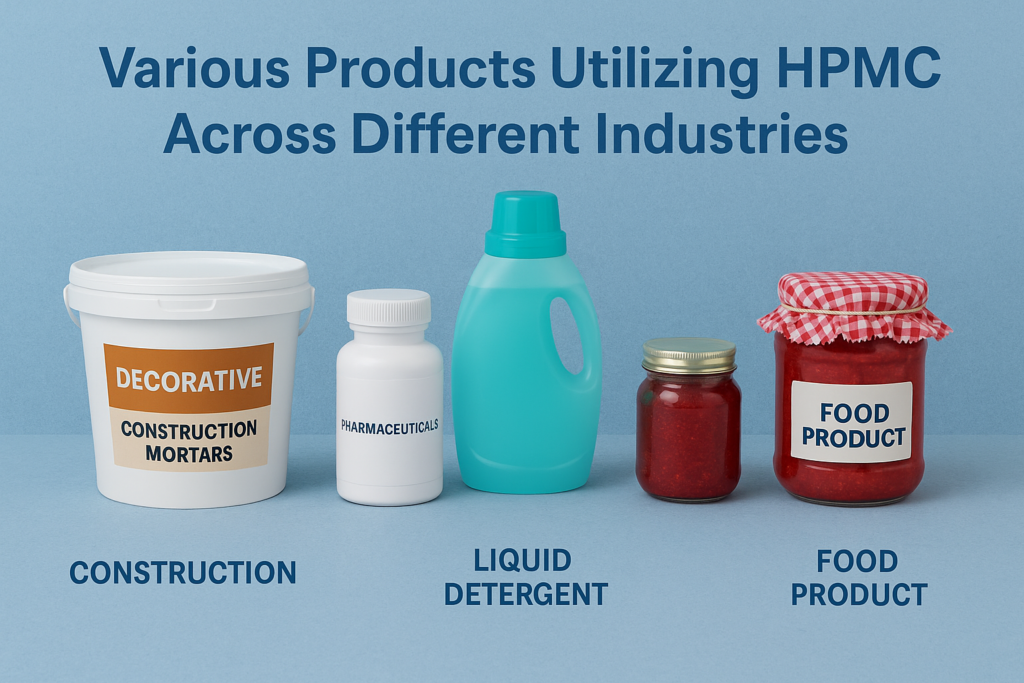
The cross-industry expertise we've developed at Kehao provides unique advantages to our detergent customers. For example, our work with construction-grade HPMC has given us exceptional insights into water retention and stability in highly alkaline environments - knowledge that directly benefits manufacturers of powerful cleaning formulations where pH levels can exceed 10.
Our experience in pharmaceutical applications has driven our quality control standards to exceptional levels. The same rigorous testing and consistency that ensures pharmaceutical safety benefits our detergent customers through unprecedented batch-to-batch reliability. When we help a detergent manufacturer develop a new formulation, we can draw on insights from how HPMC performs in the controlled dissolution requirements of pharmaceutical tablets.
The paint industry's demands for HPMC have led to innovations in preventing syneresis (liquid separation) under various conditions - knowledge that directly translates to improved stability in liquid detergent formulations. We've helped numerous customers adapt these learnings to solve separation issues in concentrated detergent products.
| Industry | HPMC Application | Transferable Insight for Detergents |
|---|---|---|
| Construction | Water retention in mortars | Stability in high-alkaline environments |
| Pharmaceuticals | Controlled release coatings | Precise quality control methods |
| Paint | Anti-settling of pigments | Preventing ingredient separation |
| Personal Care | Thickening of shampoos | Enhancing aesthetic properties |
| Food | Emulsion stabilization | Temperature stability techniques |
Personal care applications have driven development of grades with enhanced sensorial properties - creating the pleasant feel and texture consumers expect. These same properties translate directly to premium hand dishwashing liquids and laundry detergents where consumer perception is closely tied to texture and flow.
Our food-grade HPMC development has focused on creating clean-label, plant-based solutions - expertise that now benefits detergent manufacturers developing "green" and natural cleaning products. The intersection of these applications has allowed us to develop specialized grades that perform exceptionally well in eco-friendly formulations without compromising cleaning performance.
Conclusion
HPMC6 is truly the unsung hero of modern detergent formulations, providing critical stability, flow control, and enhanced performance across liquid and powder products. By choosing Kehao's WANHONG HPMC products, you gain not just a superior ingredient but a knowledgeable partner committed to your success.
-
Explore this link to understand how HPMC enhances detergent performance and stability, crucial for manufacturers. ↩
-
Learn the best practices for formulating detergents that meet consumer expectations and regulatory standards. ↩
-
Learn how particle size affects dissolution rates and dispersion in detergent products. ↩
-
Discover the unique specifications of WANHONG HPMC that enhance detergent performance and quality. ↩
-
Learn about the environmental advantages of using biodegradable ingredients in cleaning products. ↩
-
Explore the versatility of HPMC in detergent formulations and its impact on product stability. ↩ ↩ ↩
-
Discover the advantages of partnering with WANHONG for reliable HPMC supply. ↩
-
Discover how insights from various industries can improve detergent formulations. ↩
